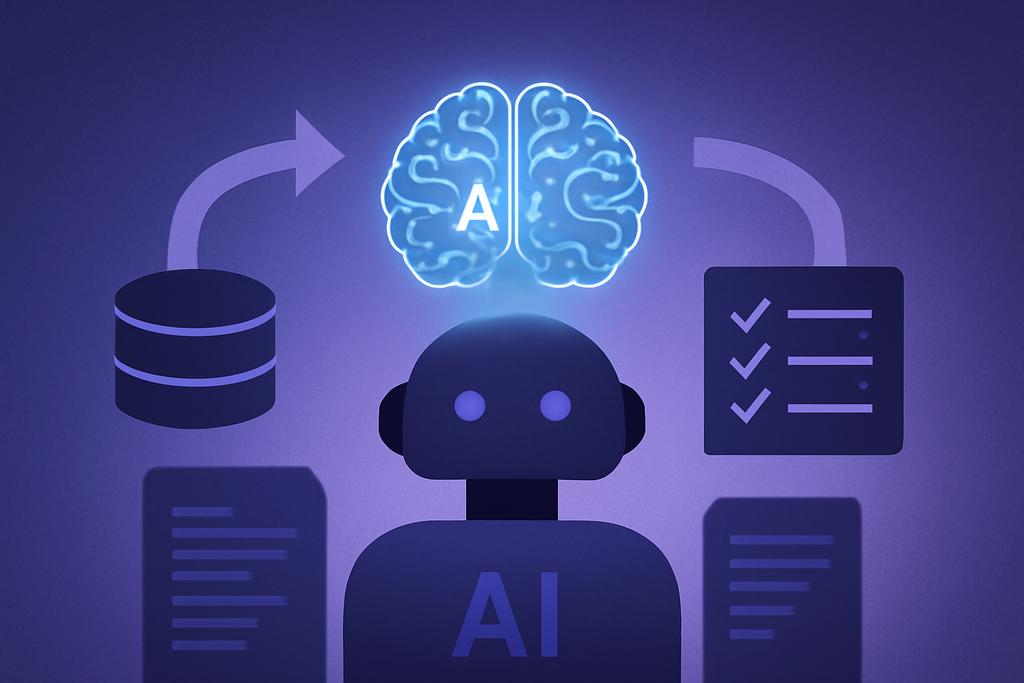The Surprising Power of Tailored Data
Imagine building a house. You wouldn’t use the same materials for the foundation as you would for the roof, right? Similarly, training powerful AI models shouldn’t rely on a generic data dump. A new study from researchers at Apple, the University of Washington, and Stanford shows that carefully matching the data used to train an AI model to the specific tasks it’s designed for dramatically improves its performance. This isn’t about some subtle tweaking—we’re talking about performance leaps that are both significant and predictable.
Benchmark-Targeted Ranking (BETR): A New Approach
The researchers developed a method called Benchmark-Targeted Ranking (BETR). Think of it as a sophisticated filtering system. Instead of blindly feeding an AI model enormous quantities of text scraped from the internet, BETR selects only the most relevant data. It does this by comparing each piece of text to examples from the tasks the AI will eventually perform, creating a kind of personalized training diet.
This isn’t a matter of gut feeling. BETR uses a rigorous, three-step process. First, it embeds benchmark examples (samples of text from the tasks the AI will address) and a small sample of potential training documents in a shared space. This creates a kind of linguistic map, showing how different text samples relate to each other in terms of meaning and structure. Next, it scores the documents based on their proximity to the benchmark examples. Finally, it trains a classifier to efficiently predict these scores for the entire data pool. This allows it to quickly sift through vast amounts of information and cherry-pick the best bits for training.
Beyond the Numbers: A 2x Compute Multiplier
The results are striking. Across a wide range of tasks and scales, BETR achieved a 2.1x compute multiplier over the best existing methods. This means that with BETR, the researchers could achieve the same level of performance as with previous techniques using only half the computational power. This isn’t just a small improvement; it’s a significant efficiency gain with profound implications for the cost and sustainability of AI development.
The efficiency gains aren’t uniform across all tasks, however. BETR’s effectiveness varied depending on the task. Tasks that were more knowledge-intensive — requiring the retrieval and processing of specific factual information — benefited the most from the tailored approach. Others, more focused on language understanding, didn’t see as dramatic an improvement.
Shaping AI’s Capabilities
BETR also offers unprecedented control over the capabilities of the AI model. By targeting specific benchmarks during the training process, researchers can effectively shape the AI’s strengths. This could lead to the creation of highly specialized models, each excelling in a particular domain, as well as more generalized models that maintain a good level of performance across a wider array of tasks.
The study’s authors—led by Alex Fang, Jeffrey Li, and Afshin Dehghan—found that training a model with data from a diverse set of benchmarks produced an AI with more generalized capabilities. This contrasts with models trained solely on the data of the tasks they are intended to perform, which demonstrated a high level of specialization but performed poorly on unfamiliar tasks. This highlights a critical point: common benchmarks, while useful for evaluating progress, can become limitations if they entirely dictate the model’s training data.
The Scale Factor
Another key finding is the impact of the model’s scale. Smaller models tend to perform best with highly selective data filtering; as the model size increases, they benefit from greater diversity in their training data. This suggests that future data selection strategies will need to consider the scale of the model being trained.
Implications and Future Directions
This research has significant implications for the future of AI. By moving beyond generic data sets and focusing on tailored approaches like BETR, we can create more efficient, more effective, and more sustainable AI systems. This is crucial not only for reducing computational costs but also for minimizing the environmental impact of AI development.
The study also underscores the importance of carefully considering the benchmarks used to evaluate AI models. Over-reliance on a limited set of benchmarks can inadvertently limit the development of more generalized, broadly useful AI systems. Future research should focus on creating more diverse and comprehensive benchmarks that better reflect the full spectrum of human capabilities and knowledge. The authors conclude that progress in language modeling will require not only better data selection methods but also a greater clarity regarding the capabilities we desire in our AI systems and the methods by which we measure those capabilities.










